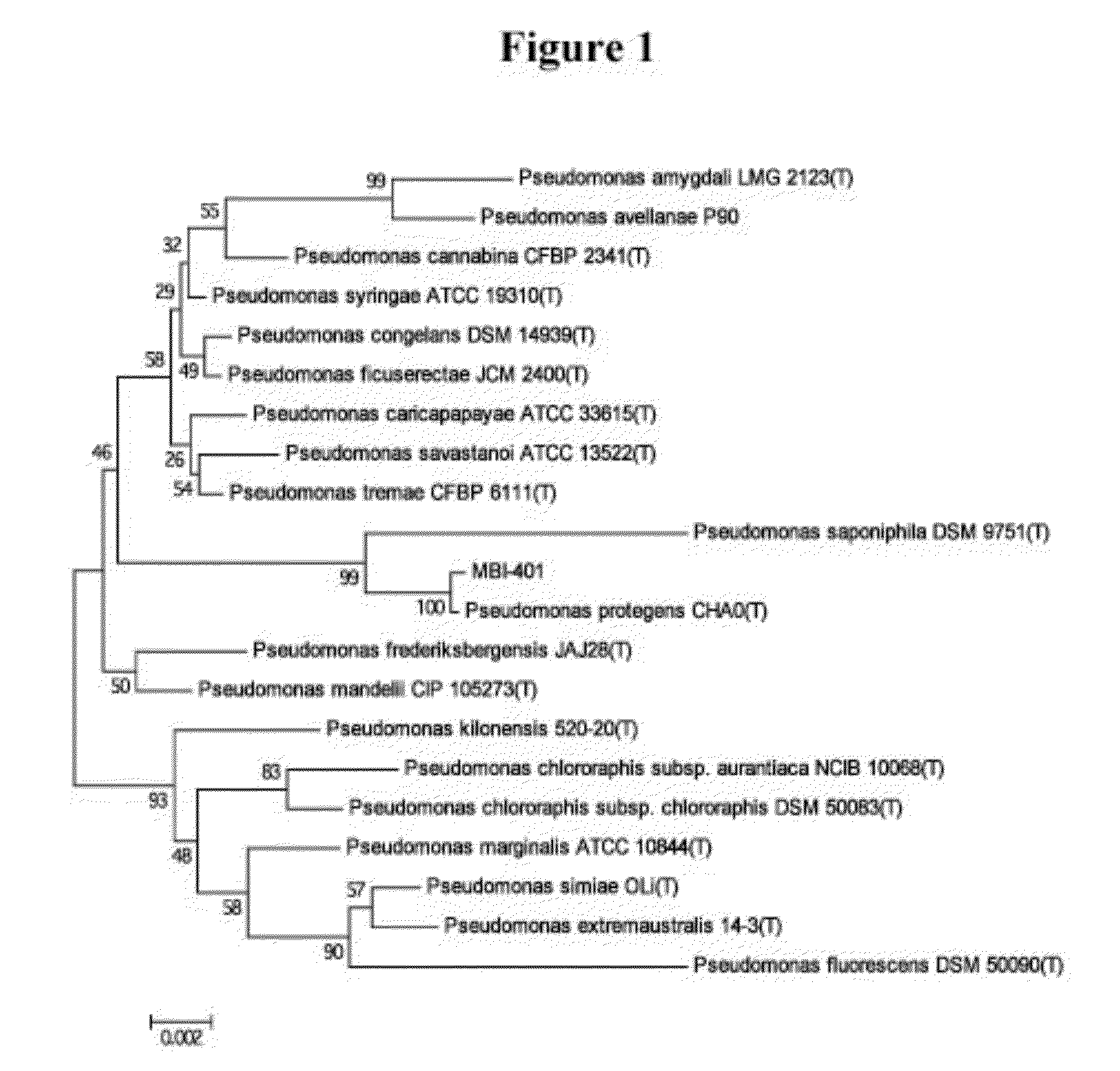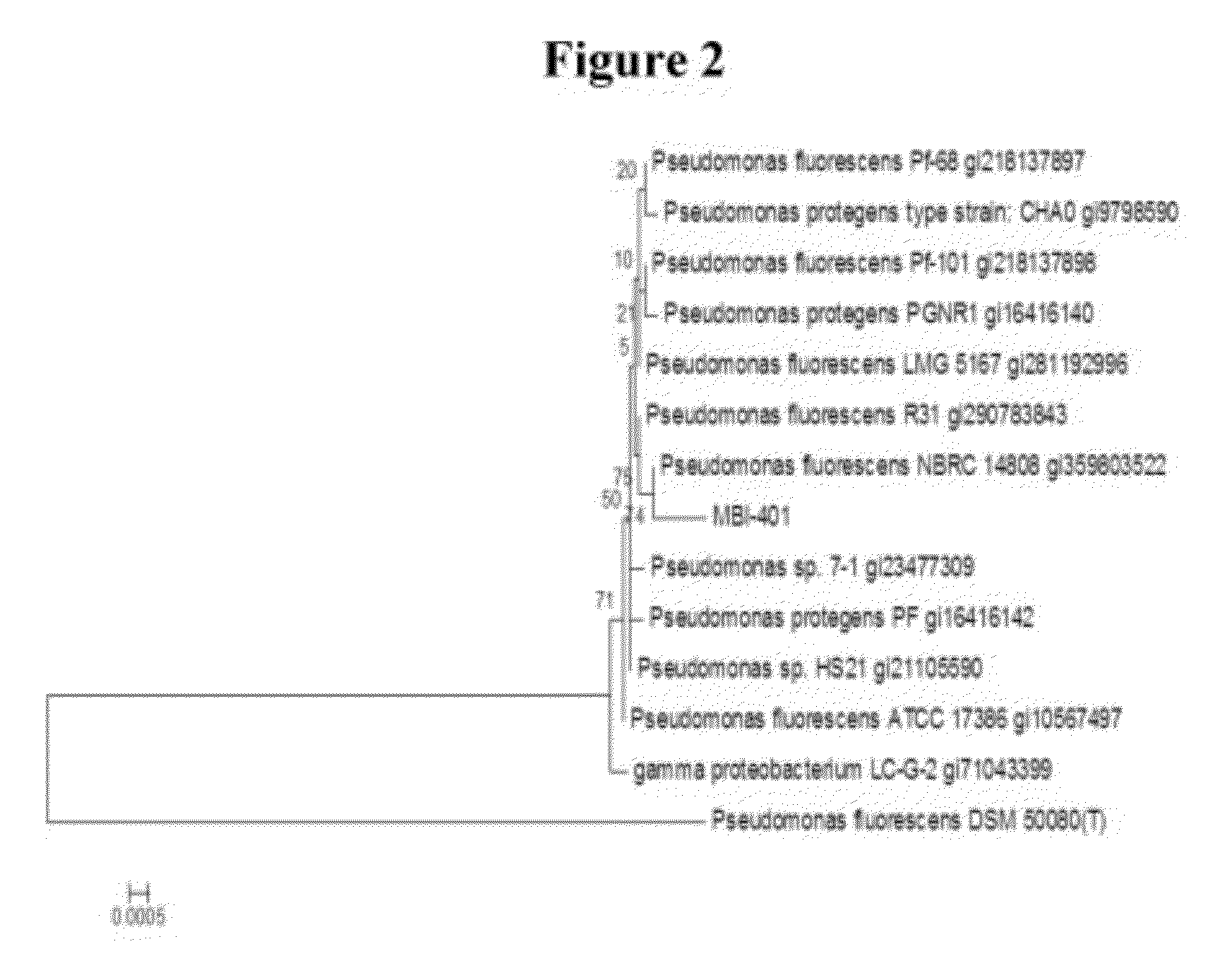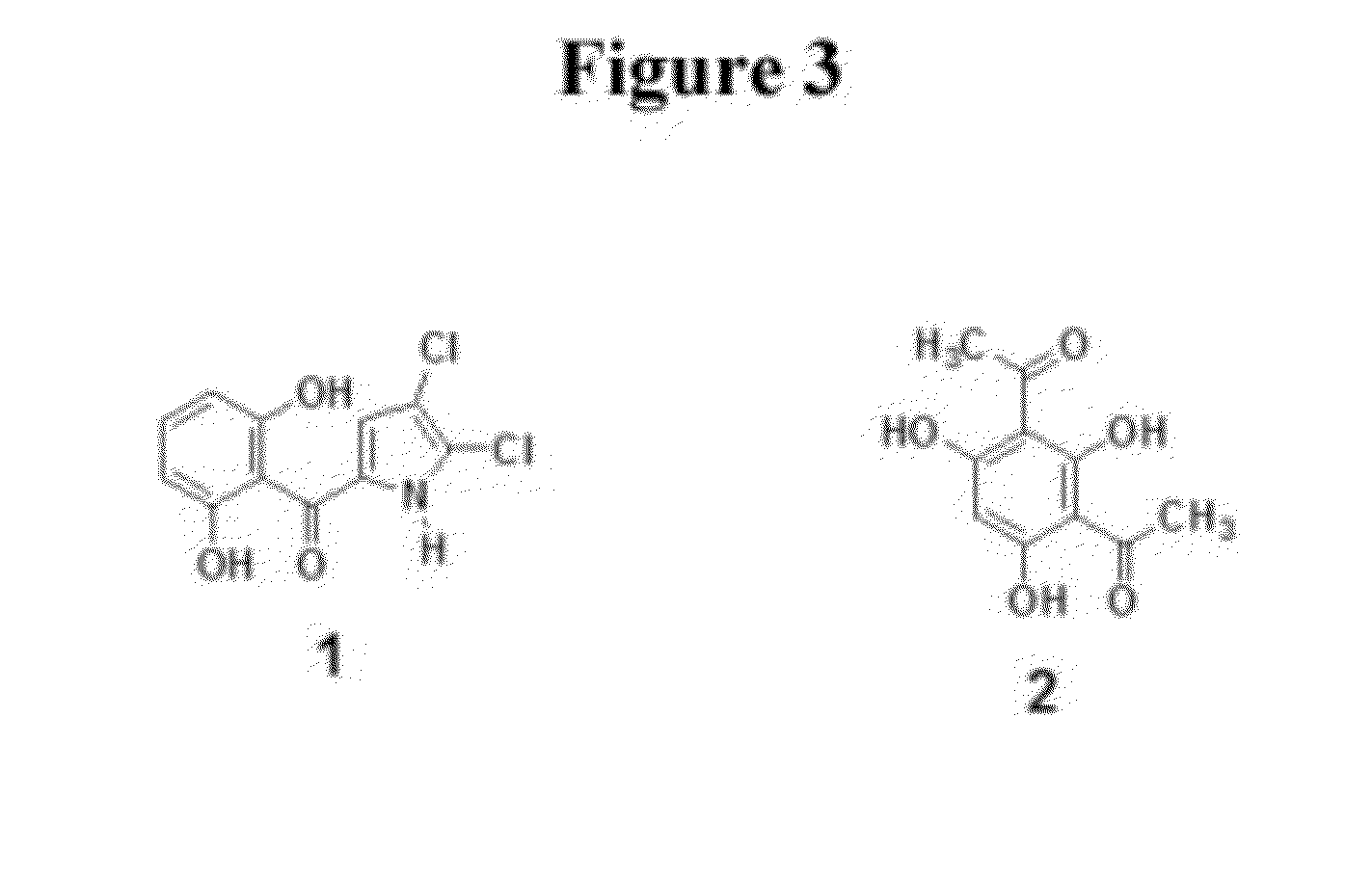Chemical and biological agents for the control of molluscs
a technology of biological agents and molluscs, applied in the field of methods for controlling molluscs, can solve the problems of increasing millions of dollars in operating expenses, serious adverse effects, and damage to water-dependent infrastructure, and achieve the effect of increasing the efficacy of one or more substances, and increasing the efficacy of said substances
- Summary
- Abstract
- Description
- Claims
- Application Information
AI Technical Summary
Benefits of technology
Problems solved by technology
Method used
Image
Examples
example 1
Analysis of Pseudomonas Strain CL145A (ATCC 55799)
[0095]The Pseudomonas strain CL145A (ATCC 55799) has been further characterized through a polyphasic approach by investigating its phenotypic and genotypic characteristics. The results from the studies disclosed herein indicate that CL145A is a better match to Pseudomonas protegens, rather than Pseudomonas fluorescens.
[0096]Recent developments in the taxonomical study of the genus Pseudomonas resulted in the creation of a new species Pseudomonas protegens, Pseudomonas protegens includes several strains formerly identified as Pseudomonas fluorescens including strains CHA0, PF, PGNL1, PGNR 1, PGNR 2, PGNR 3, PGNR 4, PINR 3 and Pf1. The basis of the reclassification is described by Ramette et al., (2011), and was officially validated in 2012 (Euzeby, 2012). Based on this new information, the best match for CL145A is Pseudomonas protegens. MBI-401 will now be identified as Pseudomonas protegens strain CL145A (CL145A).
[0097]CL145A was ch...
example 2
Molluscicide Studies
Materials and Methods
[0129]1. Allow quagga mussels to acclimate in the small Petri dishes for 24 hrs.[0130]Pour the mussels into a Petri dish to determine if the mussels are alive or not. Toss out the dead and empty mussels.[0131]Count out 10 live / healthy mussels.[0132]Put 10 live / healthy mussels in each small Petri dish with hard water.[0133]Keep a separate plate of mussels. These are the “extra mussels” that will be used to replace dead or empty mussels after 24 hrs in the other experimental plates.[0134]Aeration is not needed due to the low volume of water (DO is high).
[0135]2. Day of mussel treatment:[0136]Check the mussels (Use the rubber policemen at all times when checking the mussels. Only use the tweezers to remove dead mussels).[0137]Count to make sure there are 10 live / healthy mussels per small Petri dish.[0138]Get the sample(s) ready.[0139]Dilute appropriately with hard water in a 50 ml falcon tube for each sample. Vortex to mix prior to dosing.[0140]...
example 3
Erwinia Extracts
[0168]Erwinia carotovora is grown on LB broth (per liter: 10 g tryptone, 5 g yeast extract, 10 g NaCl, pH=7.5). Inoculum is grown by streaking a TSA (tryptic soy agar) plate from a glycerol stock. Purity of the culture is confirmed through visual inspection of colony morphology. Using a sterile 10 μL loop, colonies are collected from the agar surface and resuspended in 50 ml of LB broth in a 250 ml non-baffled Erlenmeyer flask with screw cap. The liquid culture is incubated for 48-72 hours at 200 rpm and 25° C.
[0169]After 72 hr, the whole broth is extracted with ethyl acetate. The organic phase is dried under vacuum. The dried extracted is made a 5.0 mg / mL solution in dimethyl sulfoxide (DMSO). Then, such solution (100 / IL) is added into 45 mL hard water. The final concentration of ethyl acetate extracts is 11.1 ppm.
[0170]Data shown in Table 3 indicates that bioactive compounds against the quagga mussels are produced in Erwinia carotovora when grown in the LB media. T...
PUM
| Property | Measurement | Unit |
|---|---|---|
| retention time | aaaaa | aaaaa |
| flow rate | aaaaa | aaaaa |
| HPLC retention time | aaaaa | aaaaa |
Abstract
Description
Claims
Application Information
 Login to View More
Login to View More - R&D
- Intellectual Property
- Life Sciences
- Materials
- Tech Scout
- Unparalleled Data Quality
- Higher Quality Content
- 60% Fewer Hallucinations
Browse by: Latest US Patents, China's latest patents, Technical Efficacy Thesaurus, Application Domain, Technology Topic, Popular Technical Reports.
© 2025 PatSnap. All rights reserved.Legal|Privacy policy|Modern Slavery Act Transparency Statement|Sitemap|About US| Contact US: help@patsnap.com



